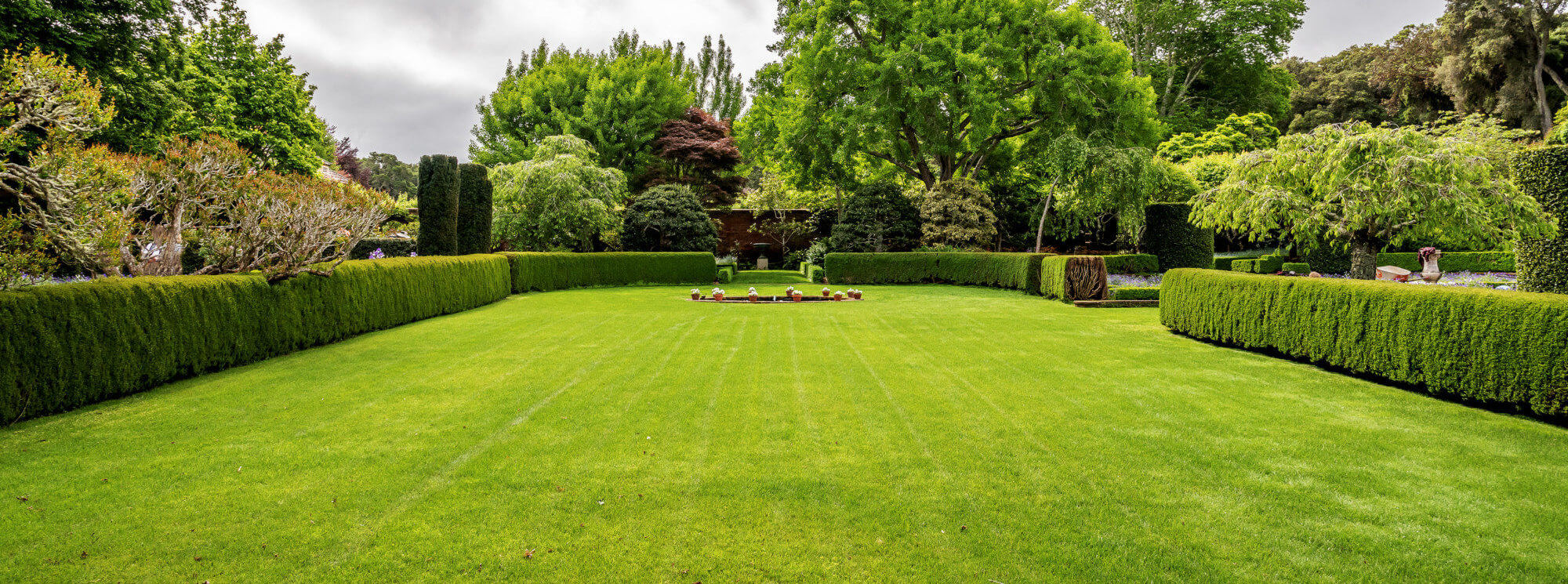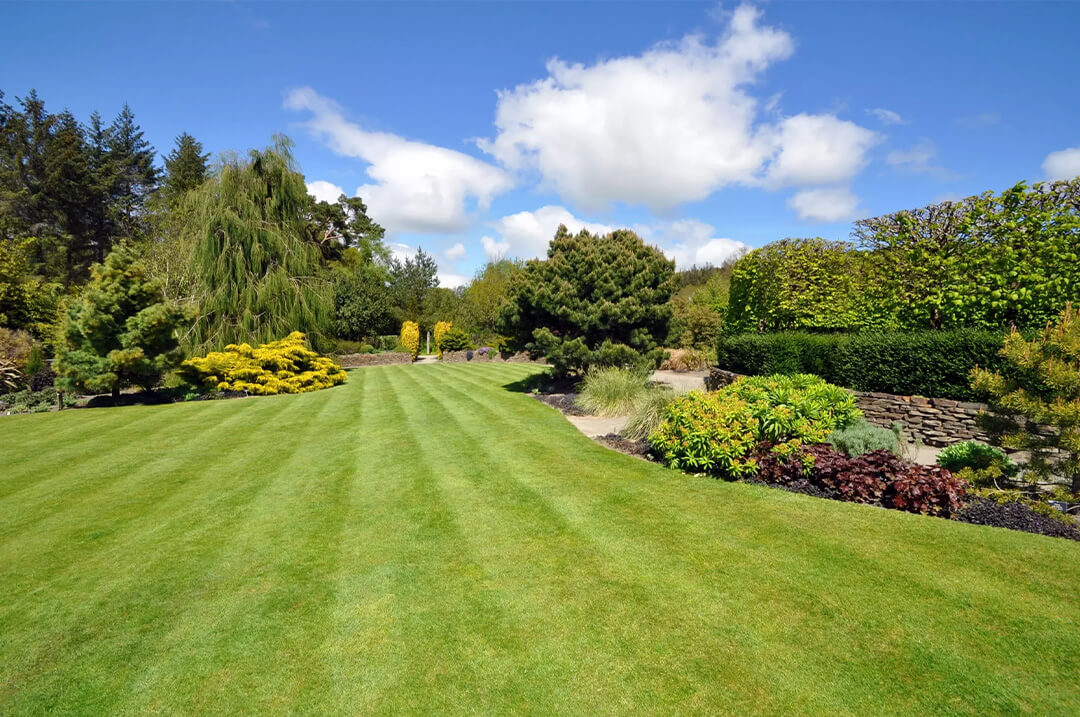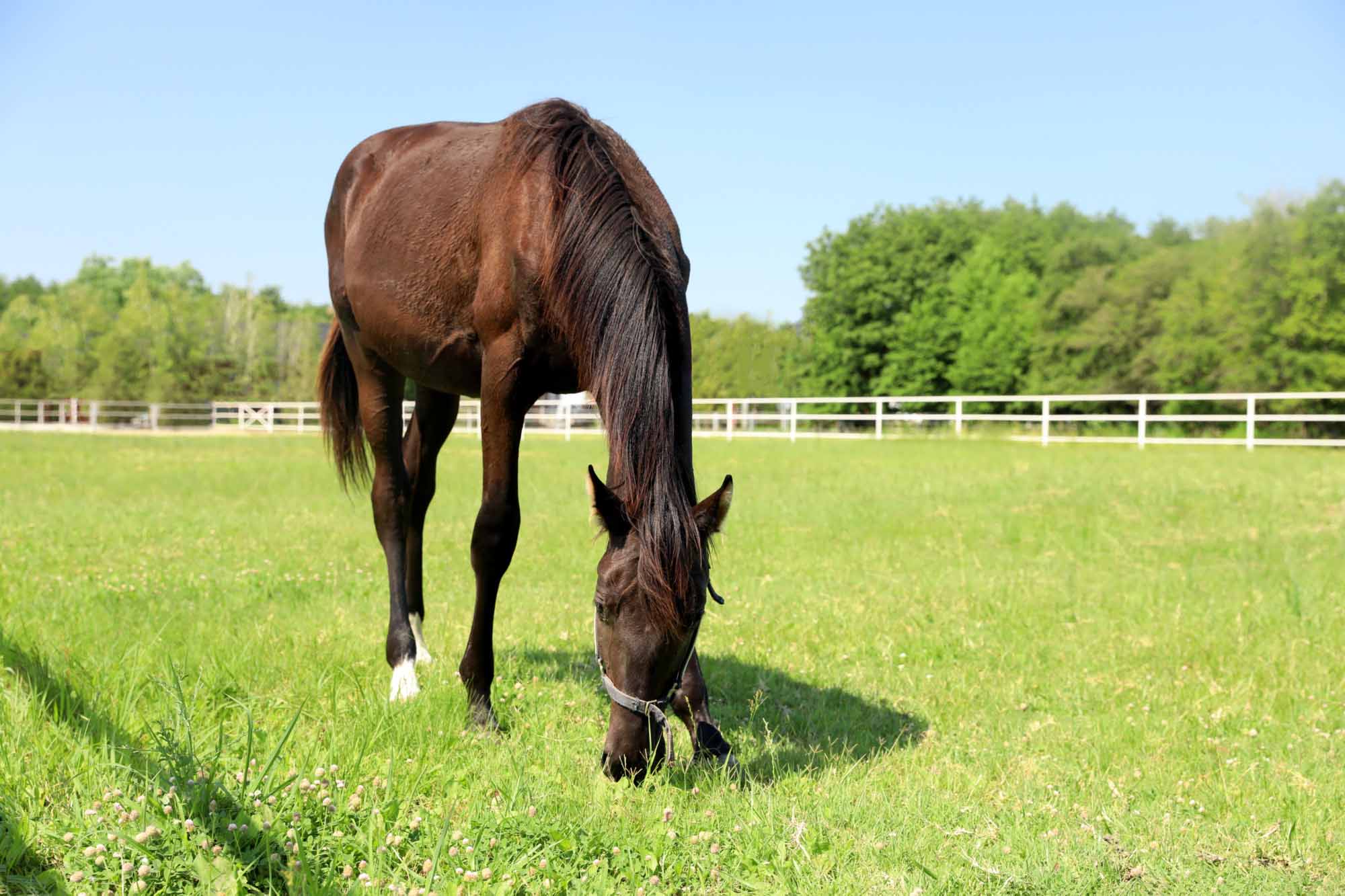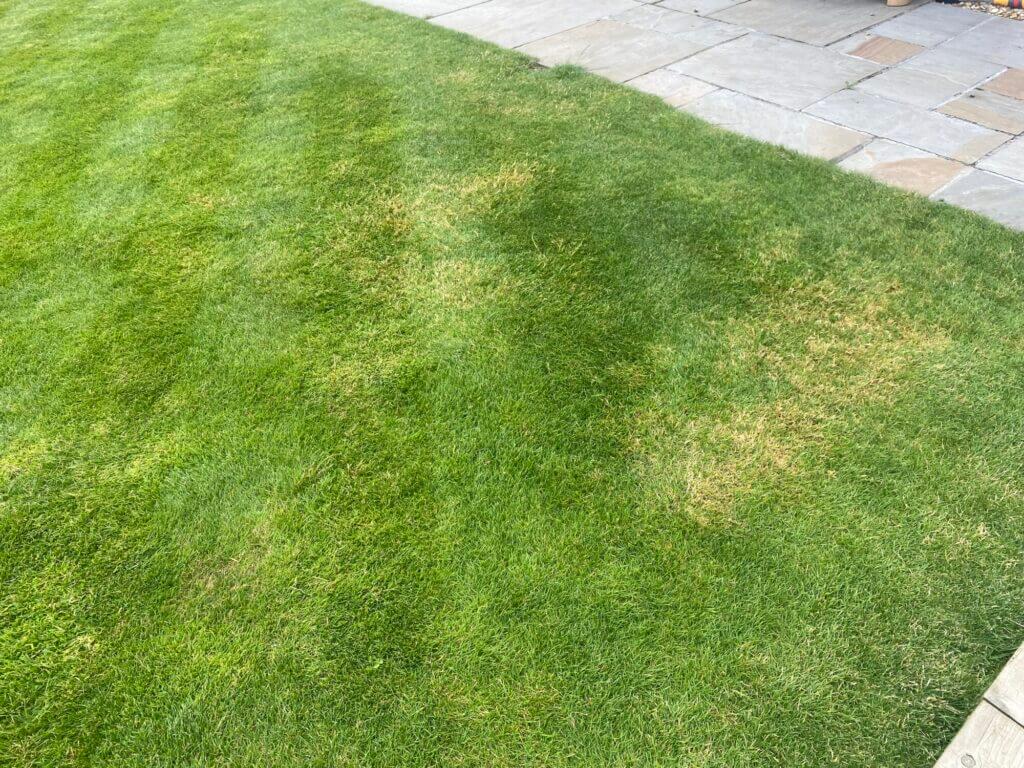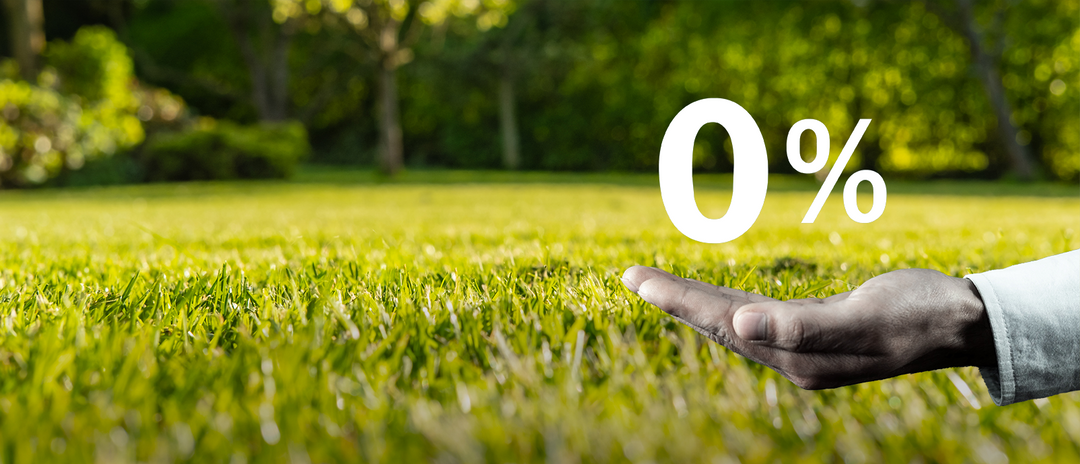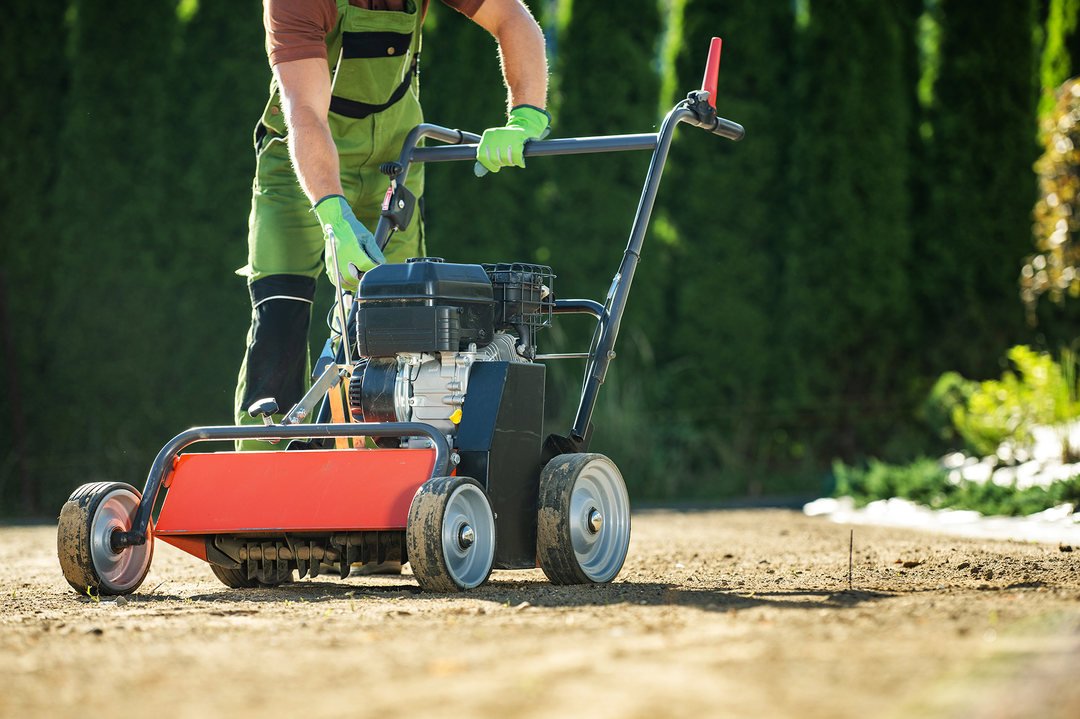Nothing ruins the aesthetic of a lush green lawn like the unsightly, brown patches of where a lawnmower has scalped. Lawn scalping occurs when the mower cuts the grass too short, exposing the soil and damaging the grass plant, leading to a less healthy and attractive lawn. To avoid lawn scapling, it is essential to understand the proper maintenance techniques that not only enhance the look of your lawn but also its health.
Mowing isn't just a chore; it's an art that requires precision, especially when it comes to timing and conditions. Cutting your grass at the right conditions can significantly reduce the risk of scalping. Likewise, setting your mower to the correct height is critical, as different grass types have specific height requirements to maintain their vitality and avoid lawn scapling.
This article provides top tips for preventing lawn scalping, emphasizing the ideal mowing habits, equipment care, and recovery strategies. Stay with us as we dive into ways to keep your green space green and your blades of grass the envy of the neighbourhood.
Why lawn scalping is a problem
Lawn scalping is a significant problem for homeowners who strive for a lush lawn. This detrimental practice occurs when lawn mowers are set to their lowest setting, leading to grass plants being cut much too close to the ground. The result? Grass blades are trimmed off completely, exposing the roots and risking serious damage to the entire lawn.
Here's why lawn scalping can have such a negative impact:
Risk of Damage and Disease: Scalped lawns reveal the root system, which can weaken grass plants and make them more prone to disease and pest infestations. Exposed roots struggle to absorb nutrients and water, impacting grass health.
Aesthetic Decline: The immediate effect of scalping is an unsightly bumpy lawn. The once-green grass becomes brown and can develop dead patches, leaving the lawn looking distressed.
Impaired Growth: Grass types require a certain grass height to photosynthesize effectively. Scalping disrupts this process, hindering grass growth and leading to a thin, less vibrant lawn.
To avoid lawn scalping:
- Always check your mower's blade setting and adjust the mowing height according to grass type. Perannial Ryegrass needs to be maintained at a higher height of cut, ideally no lower than 25mm on a lawn.
- Use sharp mower blades—dull blades can unevenly cut and tear at grass, contributing to scalping.
- Empty your grass box frequently if collecting clippings. As the grass box fills up the weight of the mower increases, puching the blade down lower and reducing the height of cut.
- Try to cut little and often and only remove one third of the leaf blade at a time.
- Try to keep your lawn as level as possible. Depressions in the lawn can be filled with topsoil or sand to level them out.
By understanding the consequences of lawn scalping, it's clear that maintaining the correct lawn level is essential for a healthy and attractive yard. Avoid setting your mower to the lowest setting, monitor the blade sharpness and adhere to recommended grass lengths to ensure your lawn stays green and vibrant.
[gallery ids="eyJ1cmwiOiJodHRwczpcL1wvd3d3LmdyYXNzc2VlZG9ubGluZS5jby51a1wvd3AtY29udGVudFwvdXBsb2Fkc1wvMjAyNFwvMDdcL0lNR18wNjExLmpwZyIsInRpdGxlIjoiTGF3bm1vd2VyIFNjYWxwaW5nIGEgTGF3biIsImNhcHRpb24iOiJMYXdubW93ZXIgU2NhbHBpbmcgYSBMYXduIiwiYWx0IjoiTGF3bm1vd2VyIFNjYWxwaW5nIGEgTGF3biIsImRlc2NyaXB0aW9uIjoiTGF3bm1vd2VyIFNjYWxwaW5nIGEgTGF3biJ9,eyJ1cmwiOiJodHRwczpcL1wvd3d3LmdyYXNzc2VlZG9ubGluZS5jby51a1wvd3AtY29udGVudFwvdXBsb2Fkc1wvMjAyNFwvMDdcL0lNR18wNjEwLmpwZyIsInRpdGxlIjoiTGF3biBTY2FscGluZyIsImNhcHRpb24iOiJMYXduIFNjYWxwaW5nIiwiYWx0IjoiTGF3biBTY2FscGluZyIsImRlc2NyaXB0aW9uIjoiIn0=" link="file"]Mow at the right time and in the right conditions
Maintaining a healthy, lush lawn involves regular mowing, but timing it correctly is just as crucial as the mowing itself. For conventional lawns, the mowing frequency alters with the seasons. In the brisk growth of spring and the mild days of autumn, mowing should occur at least once a week, optimally increasing to twice a week if the grass plants exhibit rapid growth. As we approach summer's warmth growth may begin to slow, the average lawn requires a trim weekly to sustain a green grass carpet, ensuring vitality and curb appeal.
However, during intense summer heat or periods of drought, lawns can enter a state of semi-dormancy, and mowing can drop to once a fortnight or even less frequently. It's imperative to monitor the grass's growth rate and adjust your mowing accordingly to prevent lawn scalping or dead grass patches.
Seasonal Mowing Frequency Guide:
- Spring/Autumn: Weekly or more, based on growth
- Summer: Weekly (reduce during drought)
Consistency in mowing not only enhances the appearance of your entire lawn but also encourages strong, resilient grass plants. For the best results, equip your lawn mower with sharp mower blades, and avoid mowing when the grass is wet or when the lawn level presents uneven, bumpy terrain. By adhering to these lawn care pros' insights, you ensure a captivating, healthy lawn through each season.
Choose the appropriate cutting height for your grass
Choosing the appropriate cutting height for your grass is crucial in achieving a lush lawn that's both hardy and vibrant. Proper mowing not only enhances the appearance of your lawn but also helps in maintaining healthy grass plants.
Firstly, it's paramount to mow at a height that allows the grass to thrive without causing lawn scalping, which occurs when the grass is cut too short. Avoid setting your lawn mower blades to the lowest setting as this can lead to dead grass and a weakened lawn. Rememebr to always mow shaded lawns at a higher height of cut.
Aim to mow regularly, following the one-third rule: never remove more than one-third of the grass height in a mowing session. This practice keeps grass strong and prevents stress. For different grass types and seasons, mowing heights should be adjusted:
- Ordinary Domestic Lawns: 30-40mm in summer.
- Fine Lawns: 20-30mm.
When dealing with a bumpy lawn or the first cut of the season, start with the highest mower blade setting. This prevents choking the mower with long grass clippings and minimizes stress on grass plants. Additionally, for a new lawn, ensure the grass is at least 5cm tall and use the highest blade setting for the initial cut. The height of cut on a new lawn should be brought down slowly as the plants are more vulnerable.
Maintain sharp mower blades, as dull blades can damage the grass blade, leading to a less healthy lawn. Whether you use a reel mower or a rotary mower, consistent care and correct mowing height adjustment will nurture a green grass haven.
Properly care for your mower
To ensure that your lawn remains healthy and is less susceptible to lawn scalping, it is imperative to properly care for your mower—this starts with maintaining sharp mower blades. Dull blades tear rather than cut grass, leading to damaged grass blades that can be susceptible to disease. A clean, sharp cut is essential for the health of the grass and aids in promoting a lush lawn.
Additionally, it is best practice to mow when the lawn is dry. Wet grass can clump and lead to an uneven cut, resulting in patches that are vulnerable to scalping. Moreover, mowing wet grass can compact soil and cause ruts, which also contribute to an uneven lawn surface.
Consistency in mow height is another key factor. Varying the cutting height can stress the grass and lead to a weak and patchy lawn. By consistently mowing at the same length, grass plants are encouraged to grow thicker, creating a dense and healthy turf.
To reduce the risk of lawn scalping and wear on the grass, switch up the mowing pattern each time you mow. This prevents the grass from being pushed in the same direction every time, which can lead to an uneven lawn.
Finally, be mindful of mowing times. Optimal mowing is done in the early morning or late afternoon, particularly during hot weather. Mowing during the cooler parts of the day means less stress on the grass plants, leading to healthier and greener grass.
Repairing damage from lawn scalping
Once scalping occurs, it's important to take immediate steps to repair the damage to your lawn. First, water the lawn gently and abundantly a few times each week. This helps in the recovery of scalped grass areas allowing them to regrow with vitality.
For scalping caused by an uneven lawn surface, adding topsoil and new grass seed can help level the area. This approach provides a smooth lawn level, which not only addresses the aesthetic aspect but also prevents future instances of scalping.
After repairing the damaged areas, it is crucial to adjust your lawn mower's settings. Set the blades to the grass type-specific height that is best suited for your turf. By doing so, you will protect your lawn from being cut too closely and reduce the risk of future scalping incidents. It is beneficial to maintain a lawn renovation schedule that includes regular checks and adjustments of mower settings to keep a close eye on the health of your lawn.
Remember, the goal is always to create the conditions for a consistently healthy lawn that can resist the pitfalls of scalping and thrive throughout the seasons.
Repairing damage from lawn scalping
Repairing Damage from Lawn Scalping
Reviving Grass Affected by Lawn Scalping:
- Watering Strategy: Gently and generously water the lawn multiple times a week to encourage recovery.
- Uneven Land Repair: Evaluate the lawn level and add topsoil followed by grass seeding in dips to even out your lawn surface.
Preventative Measures After Repair:
- Mowing Height Adjustment: Modify the setting of your lawn mower to its optimal height to prevent future incidents of lawn scalping.
Tips for a Healthy, Lush Lawn:
- Keep mower blades sharp: Sharp mower blades make cleaner cuts, promoting healthier grass plants.
- Avoid the lowest setting: Setting your lawn mower to the lowest setting often leads to scalping and damaging green grass.
- Regular lawn care maintenance: Engage with lawn care pros or develop a diligent routine for systematic lawn care.
By judiciously watering, leveling, and modifying the mowing strategy, your lawn can recover from the detrimental effects of scalping, resulting in a vibrant and healthy lawn.




